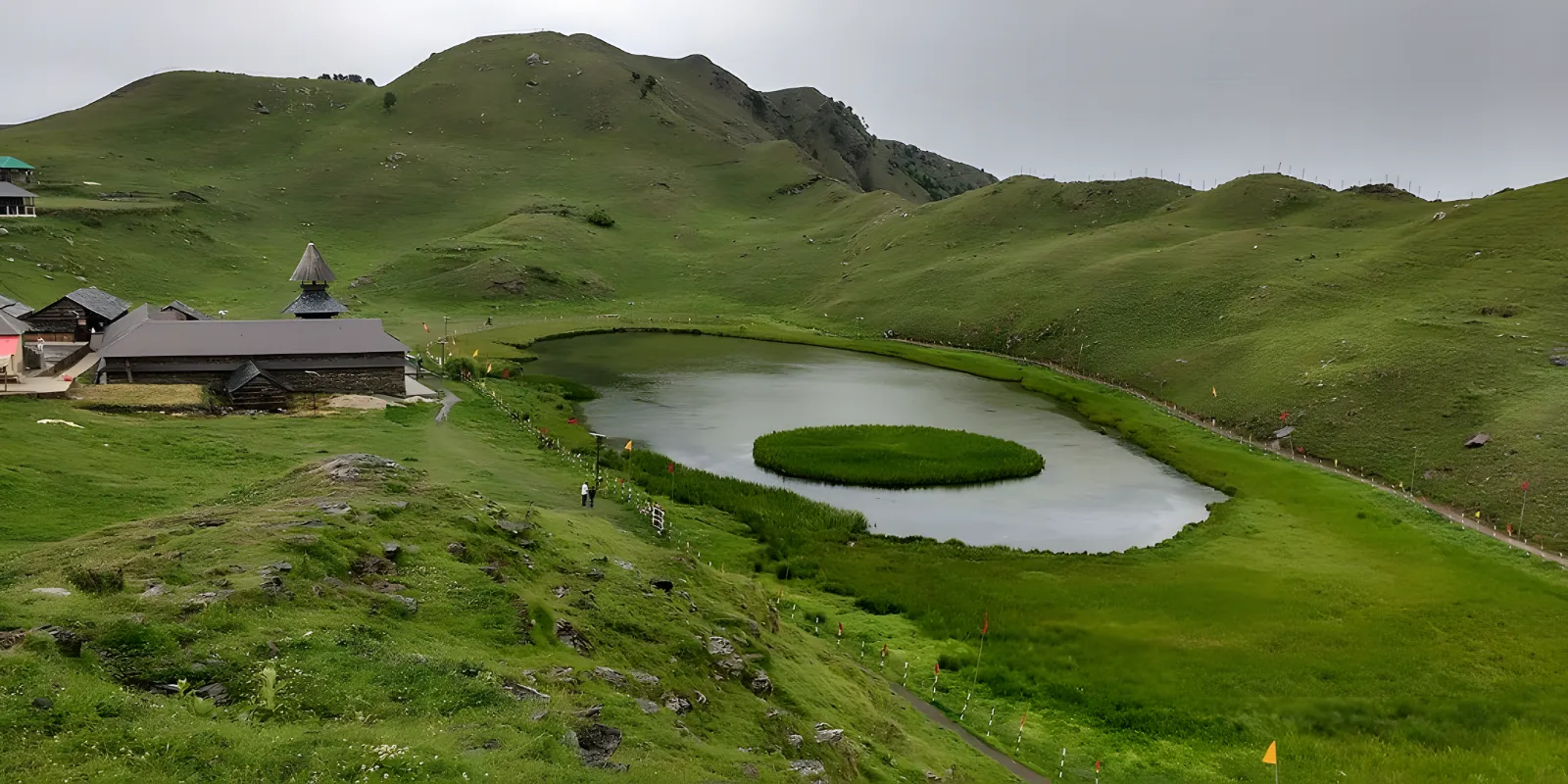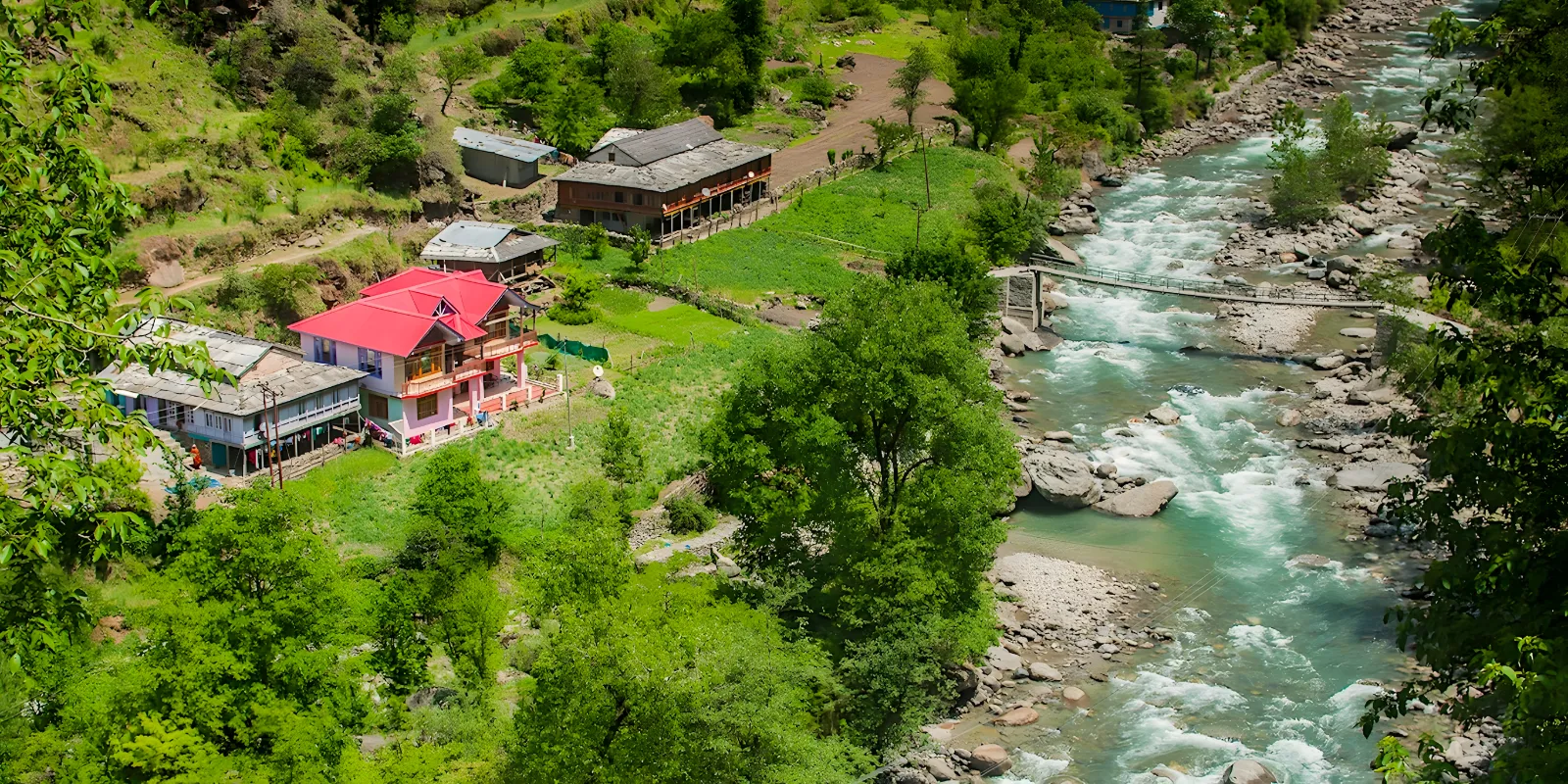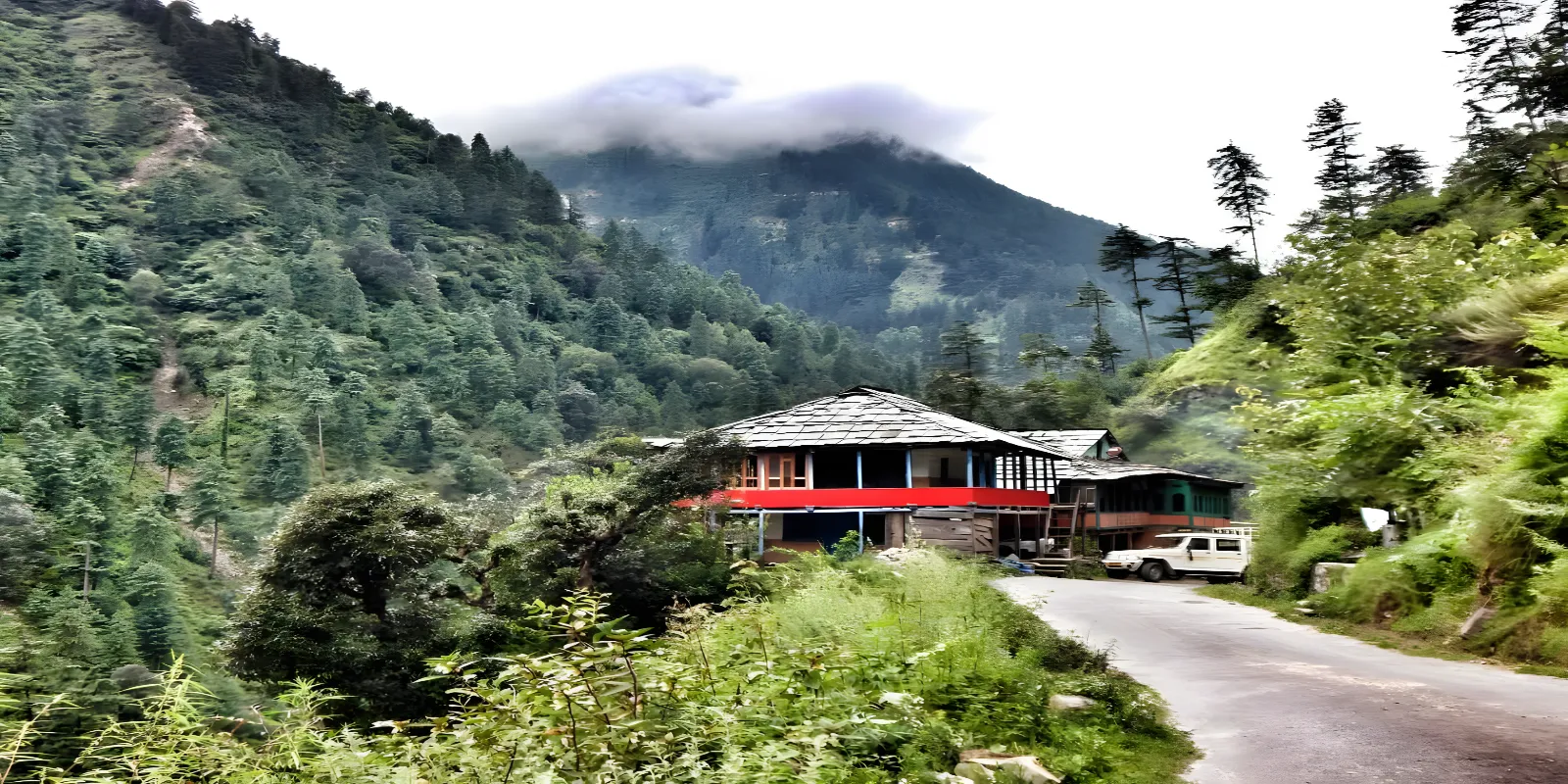My journey from Kochi began on a chilly morning in December, we took an early flight to Delhi, which takes about 3 hours. With just 3-4 hours between flights, we stayed at the airport, as there wasn’t enough time for shopping or other activities. We got down at Bhuntur airport near Kullu. From Kullu, we can either hire a cab or take a train to Tirthan. The untouched beauty of Tirthan Valley captivated me from the moment I arrived. This quiet village is a collection of settlements, some on the mountain and others along the road. The valley has a winding road with mountains on one side and the Tirthan River on the other. The air here is clean due to the few people and minimal traffic. The terrain is a mix of rocky, forested, and snow-covered mountains. A tributary of the Beas River, the Tirthan River originates from a snow-covered Hanskund Peak in the Great Himalayan National Park. The crystal-clear water is rich in minerals. Agriculture is the main source of income in Tirthan Valley because the region is blessed with natural produce. The fields grow a variety of grains, fruits, pulses, and vegetables. As the weather is pleasant throughout the year, this place is the most preferred destination for anyone looking for a peaceful escape in the Himalayas. Now let’s discuss the hidden gems of Tirthan Valley.
Have you heard about hidden gems? These are places that are untouched or lesser-known by tourists. Let's discuss some hidden gems of Tirthan Valley.
Gushaini
The first place that comes to mind when we talk about hidden gems is Gushaini. It’s a quiet village in Tirthan Valley, away from the usual tourist spots. The village is a perfect tourist spot for those seeking peace and solitude. Surrounded by nature, with clean rivers and green hills, Gushaini has a charm that feels untouched by time. It’s a true treasure in the Himalayas. Located at 4,500 feet above sea level, Gushaini is surrounded by beautiful hills and the calming Tirthan River. The blooming Himalayas add to the valley’s quiet atmosphere. While Parvati Valley is known for its river, Tirthan Valley is known for its serene atmosphere. The Himalayan trout fish found in abundance in the Tirthan River is another highlight of the area. The best time to visit Gushaini is from March to June and September to November, when the weather is pleasant and skies are clear. Avoid the monsoon season in July and August due to heavy rains and landslides.
Prashar
Prashar Lake, located at 4,500 feet in Himachal Pradesh, is a stunning and peaceful spot surrounded by lush hills and the Tirthan River. The snow-capped peaks, reflecting in the crystal-clear water create a tranquil atmosphere. The lake is famous for Himalayan trout and its floating island, which is linked to the legend of Sage Prashar who meditated here. The best time to visit the lake is in spring for its flowers, during the monsoon for its greenery, in autumn for colourful leaves, and in winter for snow. There are various ranges of accommodations available here offering various experiences in nature.
Jalori Pass
Jalori Pass, located in the Kullu District of Himachal Pradesh, is about 3,120 meters high. Jalori Pass, located in the Kullu District of Himachal Pradesh, is about 3,120 meters high. It is a high-altitude pass that offers a thrilling and scenic drive. The pass is usually closed from December due to heavy snow and reopens in March. This is one of the first passes to become accessible each year and is next to the Great Himalayan National Park and Tirthan Valley. The steep and narrow road of Jalori Pass is ideal for adventure seekers. Few people visit, making it a unique spot, but it still has good connectivity and basic facilities. Safety on the pass is generally good if you drive carefully and sensibly. A jeep safari through winding Himalayan forests is an ideal way to reach the pass. From there, you can enjoy day hikes, opt for easy camping, or embark on a two- or three-day trekking adventure.
Thanedar
Thanedar, a lesser-known hill station situated at an altitude of 8000 feet, this village is India’s first apple plantation and is known for its apple orchards and serene surroundings. It is an ideal location for anyone who prefers some quiet time away from the city's hustle and bustle. A three-hour drive from Shimla will take you to this off-beat destination for those who want to avoid overcrowded tourist spots. I came across this quaint village during my tour of Tirthan Valley. Its serene beauty captivated me.
Serolsar
Nestled at an altitude of 3,100 meters in the Seraj Valley of Himachal Pradesh, Serolsar Lake is a picturesque destination surrounded by dense pine forests. The lake offers stunning panoramic views from a 360-degree viewpoint. Its colors change with the seasons, providing a beautiful array of scenery throughout the year. The trek to Serolsar Lake is ideal for both beginners and experienced trekkers, winding through lush forests and making it a perfect haven for nature lovers.
Chehni Kothi
Chehni Kothi, located in Chehni village of Banjar valley was once the residence of King Raja Rana Dhadhia. This 1500-year-old structure was partially damaged in the 1905 earthquake. The Chehni Kothi Temple Complex also known as Chehni Kothi Tower, an ancient structure built on stone and wood is an example of traditional Himalayan architecture. Chehni Kothi, located at 2145 meters, is known for its Pahadi architecture.



